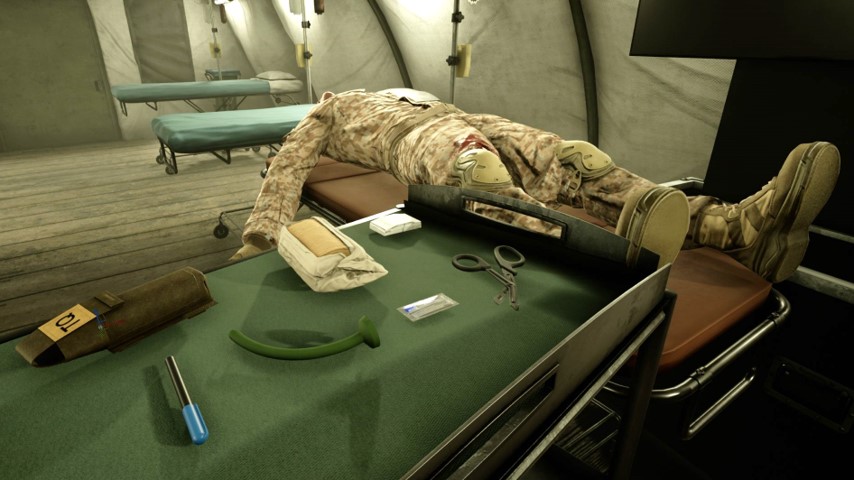8i is creating Virtual Reality (VR) and Augmented Reality (AR) training experiences that demonstrate effectiveness of immersive training for Tactical Combat Casualty Care (TCCC) in improving retention, response time, and rapid decision making under pressure. Recently, 8i developed an immersive VR training simulation for TCCC complete with “Crawl, Walk, Run,” scenarios as well as a volumetric AR training scenario. This project is funded through MTEC’s Multi-Topic Request for Project Proposals (Solicitation #17-08-MultiTopic) sponsored by the U.S. Army Medical Research & Development Command (USAMRDC).Military medical personnel are required to continuously learn new skills and retain existing skillsets, which can drastically differ depending on operational environment, representing a major educational challenge. Therefore, the military is actively pursuing the integration of advanced simulations into their medical training regimens. Advanced simulations will aid in increased training speed, better reacquisition and retention of surgical skills, reduced training in live injured patients, and fewer medical errors in the field, among other advantages.
8i’s VR and AR training experiences leverage the power of volumetric video to provide a realistic training experience that mirrors real world classroom training. Experiences also include interactive battlefield training scenarios for testing retention under pressure. Volumetric videos would allow the recording of real TCCC training that can be played back at any time on any immersive media device including AR and VR headsets, increasing the replicability of training courses and limiting the need for live instructors. Real-time volumetric video recording will also allow for live remote medical diagnosis and treatment in full 3D. 8i believes this will facilitate deeper communication and learning experiences with limitless viewpoints on any subject matter.

8i has completed the 3D models for the interactive portion of the VR experience including tools, environment, and patient models. Volumetric videos allow the recording of real TCCC training that can be played back at any time, increasing the replicability of training courses and limiting the need for live instructors.
Specifically, 8i’s “Crawl, Walk, Run,” scenarios involve a recorded class with a volumetric instructor, hands-on training with a volumetric instructor to walk the user through the steps, and a battlefield assessment where the user puts their skills to the test. Additionally, 8i has developed a volumetric AR training scenario. They are exploring live volumetric capture for both AR and VR, with live playback and communication from their volumetric capture stage. For a visual representation, see their recent example training scenario of applying a tourniquet to the lower limb at this video link.
8i also plans on building out an analytics backend to assess the results of students using the simulation, complete with an instructor dashboard. They also plan to create a multiplayer experience so multiple users train simultaneously and interact with each other. 8i’s most ambitious plan is to develop a holographic communications unit using shipping containers and low orbit satellites to create easily distributed volumetric/3D communication stations for real-time medical diagnosis and communication.
8i prepares to create an augmented reality volumetric video for a variety of interactive battlefield training scenarios to improve retention, response time, and rapid decision making under pressure for military medical personnel.

Their volumetric solution is in high demand for the richer content and communication experience created through real human representation in 3D. Their team is composed of industry leaders in computer vision, digital distribution and media.
8i’s CEO, Hayes Mackaman, has been working for over a decade in the digital communications space and has a deep understanding of how volumetric video can be applied to use cases as varied as training, entertainment, and medicine. 8i’s CTO, Simon Vestian is an expert in computer vision, 3D reconstruction, and performance capture, and leads 8i’s engineering team. Elliott Mizroch manages the project and is at the forefront of the immersive technology industry, developing award winning educational experiences and working with clients ranging from the military to the automotive industry.


